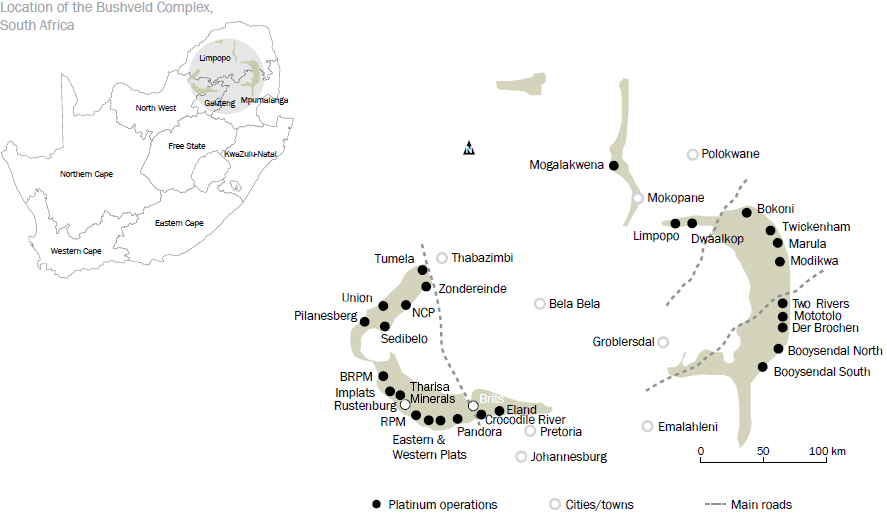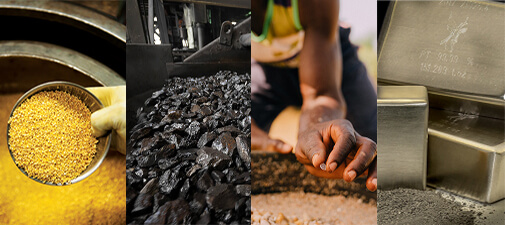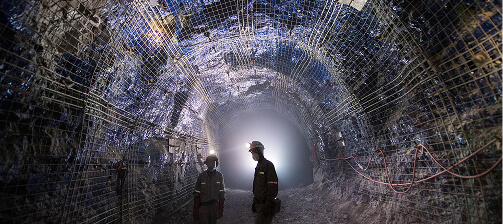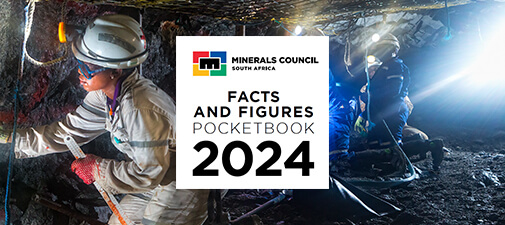Key facts and figures
- Six metals, all of them silvery-white in appearance, make up the suite of platinum group metals (PGMs)
- These metals occur together in PGM-bearing ore
- South Africa’s Bushveld Complex hosts approximately 80% of PGM-bearing ore
- PGMs are indispensable in many industrial applications including in computer hard disks, mobile phones and glass, among others
- In medical applications PGMs are used in the manufacture of anti-cancer drugs, cardiac treatment, implants and dental applications
- The durability, quality, and aesthetic appeal of silvery-white platinum and palladium has for centuries contributed to its appeal in jewellery manufacture
- China accounts for 50% of the world’s platinum jewellery offtake
- Because PGMs are highly recyclable, they are used, rather than consumed
Location map and geology

The Bushveld Complex, formed some two billion years ago, is found in the northern part of South Africa, and is the world’s largest layered intrusion. This igneous body hosts more than half the world’s PGMs, and other associated minerals such as chromium, vanadium and refractory minerals.
The intrusion is divided into four limbs – the northern, southern, eastern and western limbs. The Bushveld Complex is made up of the Rustenburg Layered Suite, the Lebowa Granites and the Rooiberg Felsics. It is underlain by rocks from the Transvaal Supergroup and overlain by Karoo sediments.
The Rustenburg Layered Suite contains mainly mafic rocks and is divided into a number of different zones. The marginal zone is found around the edge of the intrusion while from the base of the complex up is the Lower Zone, the Critical Zone, the Main Zone and lastly the Upper Zone.
The chromitite seams in the Critical Zone are divided into the lower, the middle and the upper groups (UG), with the LG6, UG1 and UG2 being of greatest economic importance.
The magnetite in the Upper Zone is rich in vanadium.
The Merensky Reef is found between the Critical and the Main Zone, and is rich in platinum group elements (PGEs): platinum, palladium, rhodium, iridium, osmium and ruthenium. (Source: Wits)
Platinum in history
The first known occurrence of platinum in an application dates back to 700BC in Egypt, where the metal was used in the Casket of Thebes (a little box decorated with hieroglyphics in gold, silver and an alloy of PGMs).
Much later, in the 1500s in South America, the Spanish Conquistadors found many occurrences of what they termed platina while they were panning for gold. In Europe, scientists of the day had a difficult time trying to categorise and find application for the metal, mainly because of its durability and other extraordinary properties. A breakthrough came in the 18th century when a Swedish researcher added arsenic to the metal but it was only in 1782 that platinum was successfully melted by adding oxygen.
After a further 25 years, it became possible to produce platinum commercially using this method, and the metal was used mainly for decorative purposes. With the scientific and technological progress in the enlightenment era, there were breakthroughs in the refining of platinum, followed by the discovery of palladium and rhodium. The catalytic properties of platinum became apparent for the first time, and the first fuel cell was devised in 1842 using platinum electrodes.
In England, the collaborative work of Percival Norton Johnson and his apprentice George Matthey gave rise to the eponymous partnership Johnson and Matthey. Their work at the time culminated in perfecting the techniques of separation and refining of PGMs and casting the metal in homogeneous ingots.
At that stage supplies were difficult to source, and came primarily from Colombia, the Urals in Russia and from later discoveries in Canada, which became the world’s largest supplier until the mid-20th century.
Platinum mining in South Africa
In South Africa, the discovery of the first platinum nuggets dates back to 1924. The geologist Hans Merensky’s follow-up work resulted in the discovery of two deposits, each around 100km in length, which became known as the Bushveld Igneous Complex. This discovery started with test work in the area around Mashishing (formerly known as Lydenburg). Based on successive encouraging findings, Merensky approached a circle of friends to raise funds to investigate any payable platinum deposits. He used the farm Maandagshoek as a base and later secured 23 claims, and worked quickly to locate other platinum occurrences in the area. Merensky’s work resulted in the naming of the Merensky reef. In 1925 follow-up work resulted in the identification of the eastern limb of the Bushveld Complex.
The mines on this geological structure have for many years produced more than 75% of the world’s output.
Since World War 2, platinum mine production has grown continuously in response to new applications being developed for the metals. A significant new use of platinum was in the petroleum industry where platinum catalysts were introduced to increase the octane rating of petroleum and to manufacture important primary feedstocks for the growing plastics industry. This was followed in the 1960s by growing demand for platinum jewellery – given its purity, colour, prestige and value.
In the latter half of the 20th century, the platinum sector in South Africa was dominated by Gencor, JCI and Lonrho. Corporate actions eventually saw the mines in these groups housed under Implats, Amplats and Lonmin respectively, the majors in the sector, and responsible for producing up to 80% of the world’s PGM supplies.
The advent of black economic empowerment, and the use-it-or-lose-it approach to minerals rights — envisaged in the Mineral and Petroleum Resources Development Act of 2002 — led to a shift in the sector, and the growth and rise of smaller platinum companies, including intense interest from foreign investors and operators alike. This legislation coincided with an upswing in PGM demand and prices from 2002 through to 2008 before a global economic depression heralded the end of the glory days in the platinum sector and shut many smaller operators down.
![Logo MCSA [logo]](/templates/chamber/images/logo.svg)











